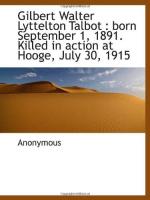|
This section contains 339 words (approx. 2 pages at 300 words per page) |
World of Biology on Walter Gilbert
Walter Gilbert developed a method for determining the sequence of bases (individual components) in DNA, for which he shared the 1980 Nobel Prize in chemistry with Frederick Sanger and Paul Berg. Gilbert was born in Boston, Massachusetts, to a psychologist mother and an economist father. Interested in science since childhood, he majored in chemistry and physics at Harvard and received his Ph.D. from Cambridge University in England in 1957 for work in mathematical physics.
While teaching at Harvard, Gilbert shifted to experimental biophysics through acquaintanceship with James Watson, co-discoverer of the double helix shape of DNA. They experimented with messenger RNA, the nucleic acid that carries gene information to a cell's ribosomes for protein production.
In 1965-66 Gilbert and Benno Muller-Hill explored what mechanisms a cell employs to turn genes "on" or "off." Using a radioactive tracing technique, they isolated a protein which turns off production of lactose-digesting enzymes in the bacteria E. coli. This verified the model of cellular gene expression proposed by François Jacob, André Lwoff, and Jacques Monod a few years earlier.
This work led to Gilbert's sequencing of the DNA bases in and near the same genes. In 1975, at the suggestion of Andrei Mirzabekov, a Soviet scientist, Gilbert used the chemical dimethyl sulfate to fragment a strand of DNA at sites of the bases guanine and adenine. He labeled the segments with radionucleotides, cut them with restriction enzymes, which break DNA at known locations, and separated the fragments by electrophoresis. Gilbert and Allan Maxam developed a similar method for the other two DNA bases, thymine and cytosine, using the chemical hydrazine. After identifying the base sequences in the fragments, Gilbert was able to reconstruct entire DNA strand sequences thus "reading the letters" in which genetic instructions were coded.
In the 1970s and 1980s, Gilbert found himself in the midst of social and medical controversy when he decided to use the information he had to further commercial biotechnology when he joined Biogen. In 1996 he became CEO of NetGenics, a pharmaceutical biotechnology company.
|
This section contains 339 words (approx. 2 pages at 300 words per page) |


